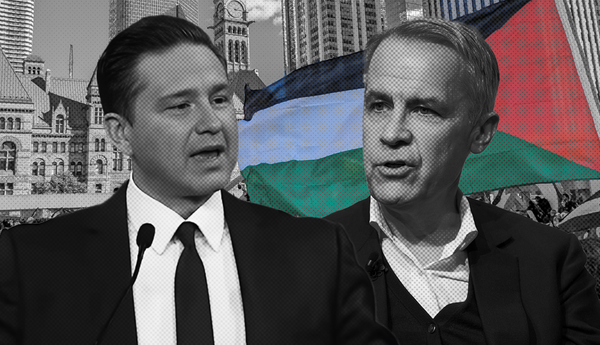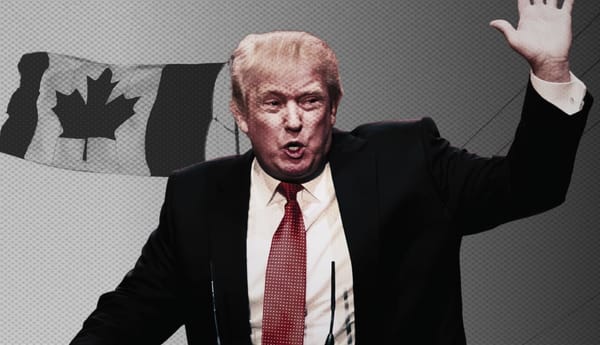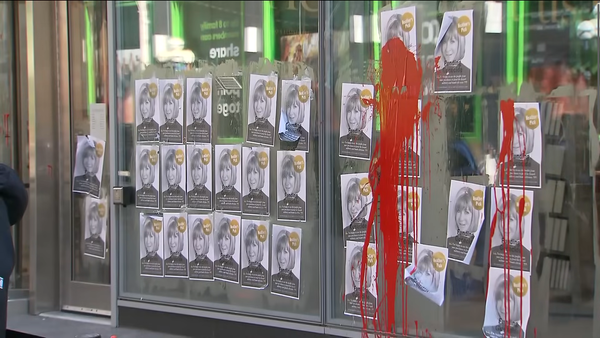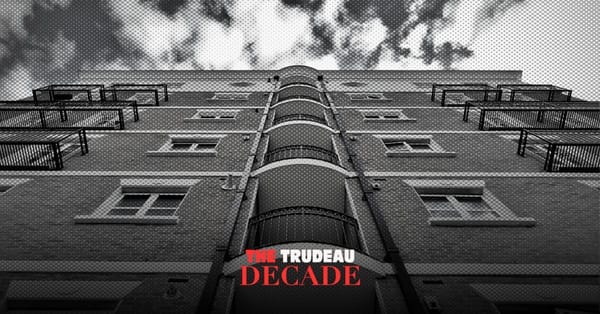The country is divided. Divided by vaccination status, by whether we drive pickup trucks, by whether we live in a city or not. There are cleavages all throughout the country, we’re told: the country is tearing itself apart, and the truck encampment is an expression of that. But we’re also divided by reality and nonsense.
Listen to some politicians and many commentators on the right, and you might get the impression that there’s some unifying principle or goal of the convoy encampment that has taken over Ottawa’s core. But large parts of the convoy that has put down stakes in Ottawa live in a land of fantasy and misinformation.
The encampment has a seemingly party-like atmosphere on the weekends, when people flood into the city, packing the blockaded streets, playing loud music and handing out food. But when you walk around for more than half a second, you feel the deep wrongness of what you’re looking at. Signs about the evils of vaccination and all manner of conspiracies have been put up along the fence outside parliament, displayed by trucks and carried around. The supposed friendliness of what’s happening is a shallow one, hiding something much less jovial.
The organizers of the occupation don’t have reasonable goals: they’re asking for a country-wide, blanket removal of health mandates. Masks, vaccines, capacity limits — the whole thing. Not to mention the since-withdrawn “memorandum of understanding” that effectively called for a committee of public safety to take over the government, led by the convoy organizers, in concert with the Senate and the governor general. (In a recent press conference, they somewhat downgraded this demand, and said they’d agree to form a coalition government with the opposition parties. Just don’t ask how that would work. They’ve now backed away from that, too.)
Putting aside the taking-over-the-government part, the meat of what they want is to go back to normal while COVID-19 still circulates. The current wave of the pandemic hasn’t been as bad as it could have been. Mass vaccination has done its job, and despite the enormous explosion of COVID-19 cases, where we saw more new cases than ever, the rate of hospitalization thankfully hasn’t followed as closely as it once did. But despite all the talk of the mildness of the Omicron variant, this hasn’t prevented thousands of people from dying.
On November 26, the day Omicron was declared a variant of concern by the World Health Organization, the total death toll of the pandemic in Canada stood at 29,619. As of February 9, that number had risen to about 35,114. That’s more than 5,000 people who have died in this wave of the pandemic. The death rate in the country is near its all time high, which you could be forgiven for not knowing, given the tenor of COVID-19 discourse of late.
The Conservative Party was looking to use the protesters for their own ends. Chief among them Interim Leader Candice Bergen, who emailed her party to say the convoyers should be made into a wedge issue, and despite her rather cynical plan being made public, going ahead and doing just that. Others in the party, presumptive frontrunner for leadership Pierre Poilievre and former leader, Andrew Scheer, among them, both did the same thing. This seems to have backfired, however, as Bergen reversed course today, withdrawing the support of her party for the protesters, saying the barricades should come down now that they are affecting the economy, particularly through the blockade of the Windsor-Detroit bridge. Blockading the capital city and terrorizing downtown residents was one thing, but the (quite obvious!) knock-on effect of spreading protests was too much.
And in parts of the country, a lot of what the convoy protesters are calling for is already happening. For example, Alberta Premier Jason Kenney is once again trying to save his own hide, this time by dropping the province’s vaccine passport system before hospitalizations have begun to decline. Saskatchewan is following a similar path. In those provinces, the state of the pandemic doesn’t seem to matter. They’ve decided it’s over, and are acting accordingly.
This conception of freedom is a narrow one. It’s based on the idea that the freedom to get sick from a highly contagious virus is a risk to one person alone. But there are all kinds of others put at risk. There are those who are vulnerable no matter how vaccinated they may be, the old, those with disabilities, with cancer, with compromised immune systems. People who are being told the only way they can stay safe — stay alive — in the future is to seal themselves up at home. And there are those who will have some other illness progress further, or die outright, because they’re unable to get timely medical care due to the immense backlog in a healthcare system being repeatedly pushed to its breaking point.
This doesn’t mean health restrictions must stay around forever. But they may need to stay around a while longer. They should be removed at a time when the virus isn’t spreading uncontrollably, when hospitals aren’t at max capacity, when people aren’t dying by the dozens every day.
In the end, this makes for the most frustrating thing about these protests. There’s plenty wrong with the way governments at all levels have handled this pandemic: how workers are left without any real sick leave; how most vaccination programs work best for those who can afford to skip a day at work or work from home when the side effects kick in; how the most vulnerable are perpetually abandoned to ‘open up the economy’ with maximum speed; how corporations can easily walk away with tens of millions of dollars in pandemic supports and instantly turn around and pay that out to shareholders and executives; how the Global South can be abandoned to its fate while the North gobbles up vaccine resources with little actual effort to help; how decades of stripping the health care system to the bone means that running beyond maximum capacity is just the way of doing business, and not an extraordinary measure.
There are countless ways our governments have failed us all, and are failing us to this very day. But the most sustained and well funded show of anger at these failures is based on the idea that governments have done too much to keep people from dying. It’s a bad sign for the years to come.






